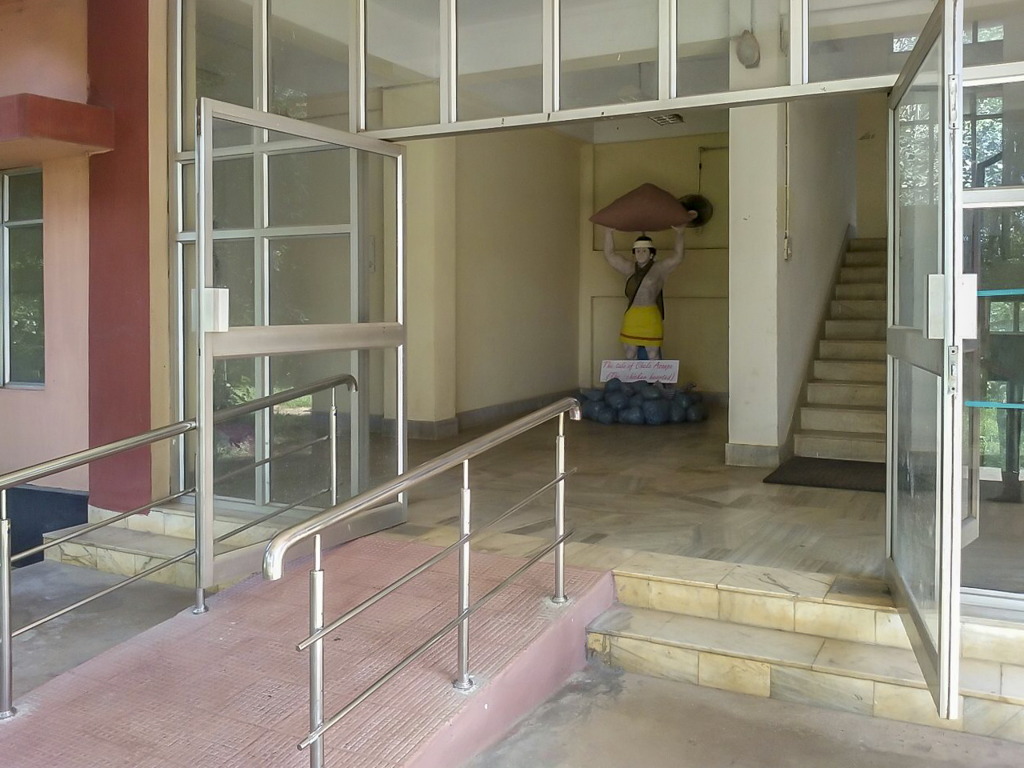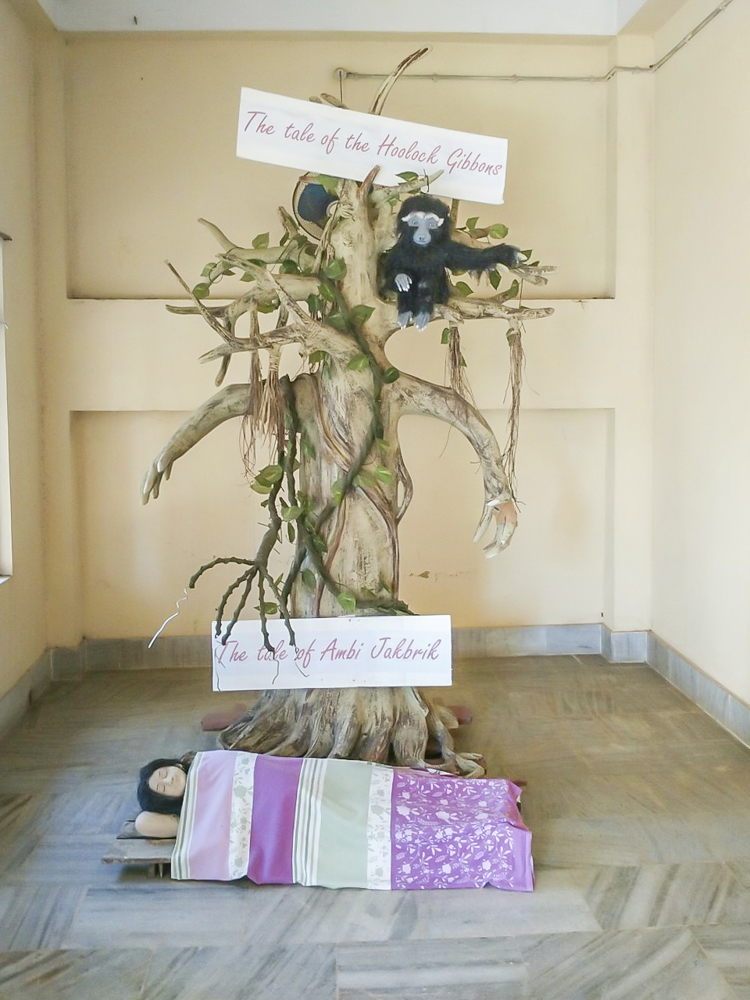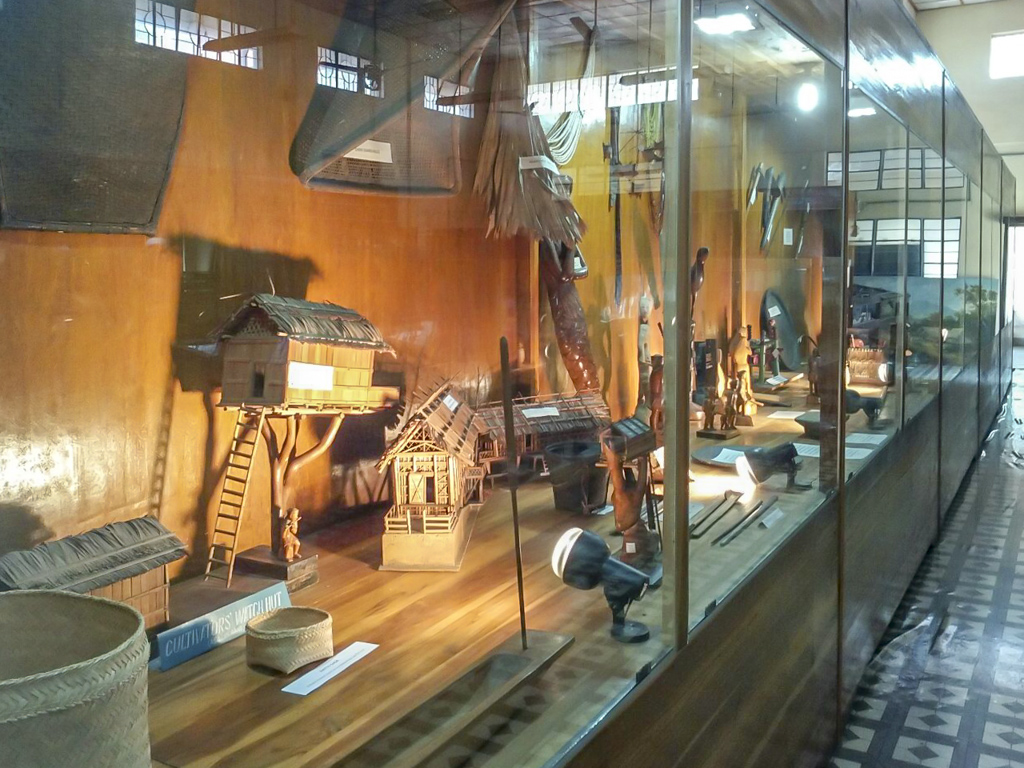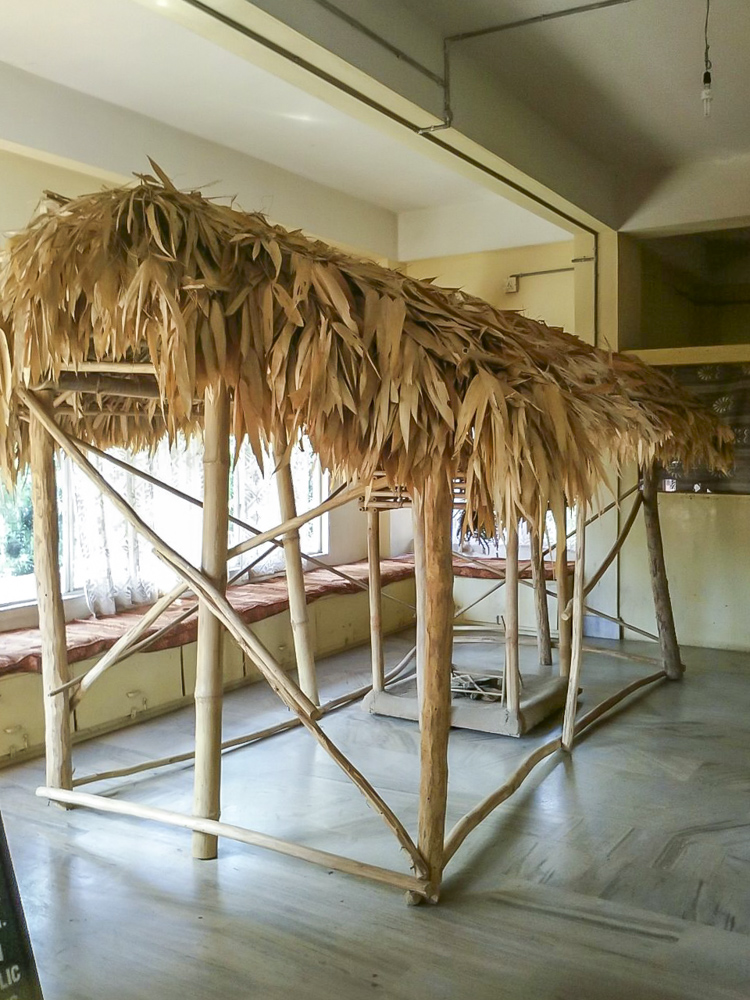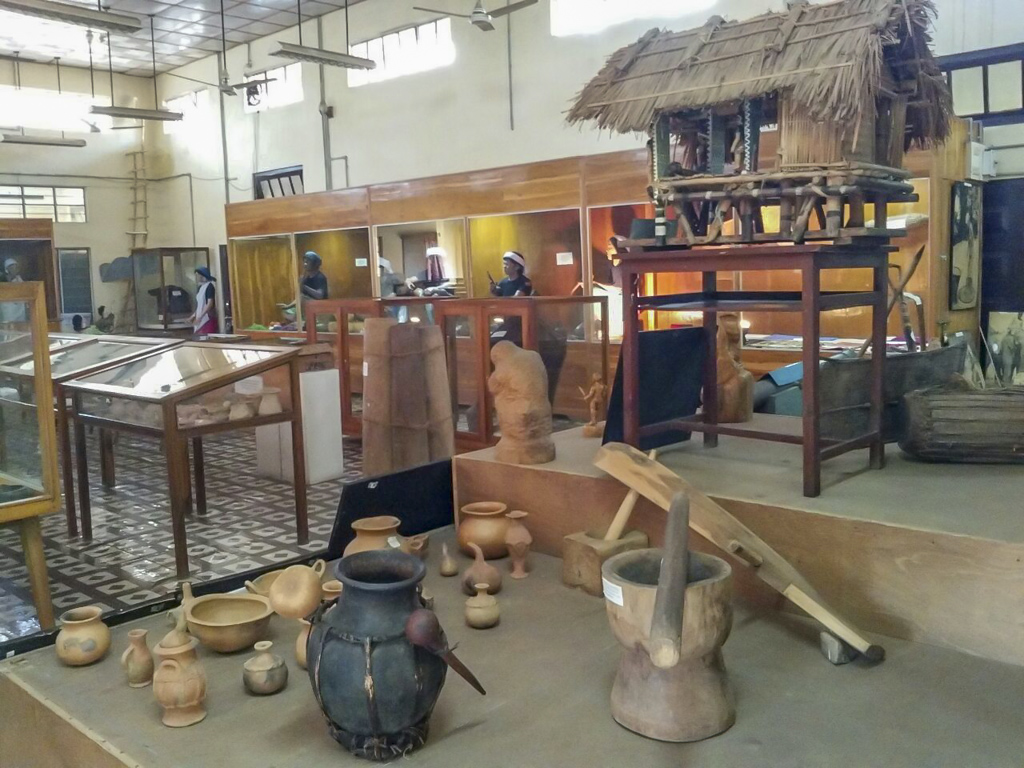The District Museum in Tura was set up in August of 1989 with the intent of protecting and preserving the cultural and artistic heritage of the people of Garo Hills. It is a relatively small museum in terms of infrastructure but there has been a steady collection of artefacts since its inception.
As it is a state government museum, the collection process needs the approval of the Art Purchase Committee which consists of members from various fields and various government departments. This committee meets once every year to discuss various items that sellers bring for sale before deciding on accepting or rejecting them.
There is also a large collection of artefacts that have been donated by the residents of Tura that range from fossils to old British era coins, and a considerable number of cane and bamboo items. The jewellery section of the museum contains artefacts that are rare to find.
Some of the interesting pieces in the museum are the terracotta plaques from the archaeological site in Bhaitbari, the container used for collecting blood during beheadings (Rangrawengkong), and rangs. An entire display cabinet is dedicated to rangs which are large bronzish containers that were once considered a sign of immense wealth.
25.5193691, 90.1846734
